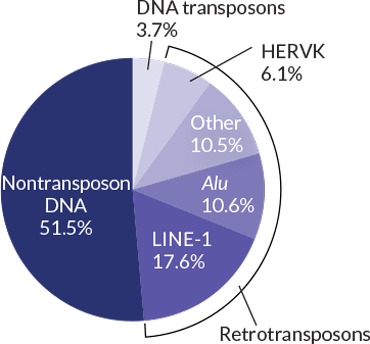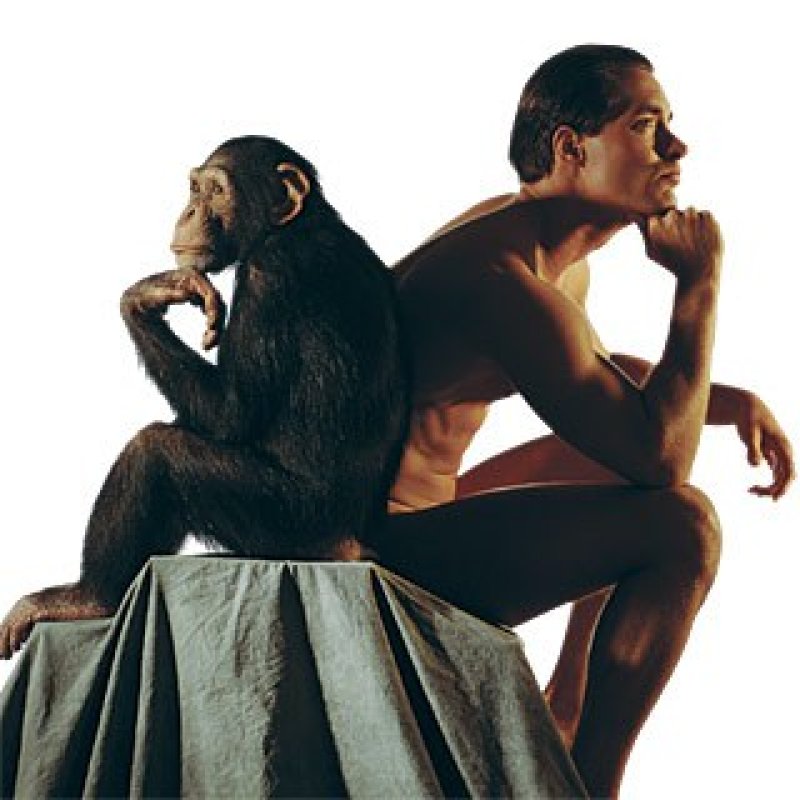Face-to-face, a human and a chimpanzee are easy to tell apart. The two species share a common primate ancestor, but over millions of years, their characteristics have morphed into easily distinguishable features.
Those facial features diverged with the help of genetic parasites, mobile bits of genetic material that insert themselves into their hosts’ DNA. These parasites go by many names, including “jumping genes,” “transposable elements” and “transposons.” Some are relics of former viruses assimilated into a host’s genome, or genetic instruction book. Others are self-perpetuating pieces of genetic material whose origins are shrouded in the mists of time.

Some of the control switches transposons once used for their own hopping have been recycled over time into useful tools that help species, including Homo sapiens, adapt to their environments or take on new characteristics.
Repurposed transposon parts are at the very heart of what makes humans human, says Gennadi Glinsky, a cancer biologist at the University of California, San Diego. Some of the first genes to turn on in early human embryos are transposon remains that now help direct embryonic development. We humans also owe parts of our immune system, and perhaps our brainpower, to transposable elements.
The GLP aggregated and excerpted this blog/article to reflect the diversity of news, opinion, and analysis. Read full, original post: Jumping genes play a big role in what makes us human































